
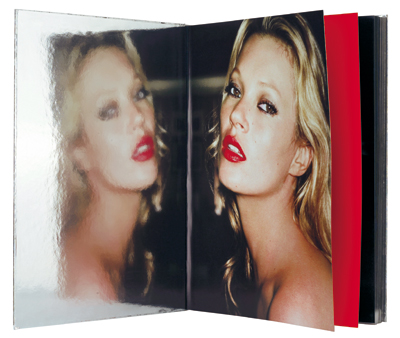
Photography by Mario Testino (Click images to enlarge)


It is no secret that Kate Moss is the most successful supermodel. The reason for her success maybe less obvious and hard to pin down, but the main is pretty simple — Moss is a blank canvas, and this is the supreme quality of a model. She adapts looks like Madonna adopts stage personalities. Upon this blankness, the designer, the make up artist, the photographer can layer whatever characters they choose.
Mario Testino is one of those photographers. To celebrate the model, he is releasing a book titled Kate Moss by Mario Testino (Taschen, $700) later this month. The book is appropriately swathed in luxury like Moss in designer clothes — the edition is limited to 1,500 copies, each numbered and signed by Testino himself. Half of them will be distributed through Taschen flagship stores, half some will go online.
The silver tome, encased in pink plastic, is gorgeous. Its 230 pages contain 100 photos of Moss ranging from 1993 to 2010, which subtly lets you know that Moss just doesn’t age. Testino is not only a long time collaborator, but also Moss’s friend and the images reflect that. The pictures range from the most intimate — Kate’s shoe closet, who doesn’t want to see that?! — to the most glamorous. She is depicted, alternately, naked or holding her daughter, glammed up or in jeans, vulnerable or impenetrable. Many of the photos are being published for the first time, and the book certainly makes for a beautiful homage to a beautiful icon.
(more…)

Images courtesy of AT Verlag

Many of us would assume that life in a Buddhist monastery, void of worldly temptations and daily distractions, isn’t exactly rich with culinary temptation. However, a glance at international food photographer Jan-Peter Westermann’s new cookbook,
The Chinese Temple Kitchen, proves this picture a false one.
The Chinese Temple Kitchen came out this past May from German publisher
AT Verlag. A food-inspired travelog of Westermann’s journey to Buddhist monasteries throughout China, the book includes over 100 centuries of recipes, accompanied by appetizing photographs of their results.
In the Buddhist tradition, the dishes Westermann cites are all vegetarian, and although they may look complex, the recipes all use easily-acquired ingredients and are simply prepared. The ingredients are chosen for their nourishing, detoxifying effects, to slow the aging process and ultimately prolong life – perhaps only to be able to take part in such exquisite meals for longer.
(more…)

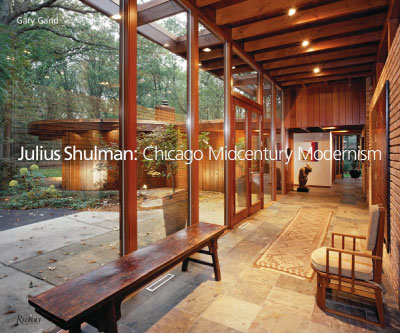
All photographs are by Julius Shulman and Juergen Nogai, copyright 2010


Architectural photographer Julius Shulman documented so many truly great buildings — canonical works by Richard Neutra, Rudolf Schindler, and Charles and Rae Eames — that it’s easy to take his skills for granted. We see the technical assurance in his pictures but credit much of their beauty to the architecture itself. A new book, Julius Shulman: Chicago Mid-Century Modernism, which documents houses by lesser known architects, puts that notion to rest. These more modest houses are burnished by Schulman’s lens so that they too emerge as masterpieces.
This entire generation of Chicago architects was working under the immense shadows of Frank Lloyd Wright and Mies van der Rohe, modern masters who had built in and around the city. They all adapted common building technologies, like brick walls and wood framing, to achieve the deep cantilevers, full-height windows, and open plans of a modernist vocabulary. And they all adapted the long, low, interlocking volumes of Wright’s prairie style to suit simpler, smaller houses.
The houses documented in the book are warmer and more welcoming than the Case Study Houses that Shulman shot in the 1950s, whose pristine geometries exuded high style. For one thing the Chicago houses were photographed decades after their completion, after they’d been lived in and roughed up a bit. And the houses possess a richer, darker palette. They’re finished with oak panels, rough stone facing, and colored ceramic tiles, and filled with shaggy rugs and hand-thrown pottery.
(more…)
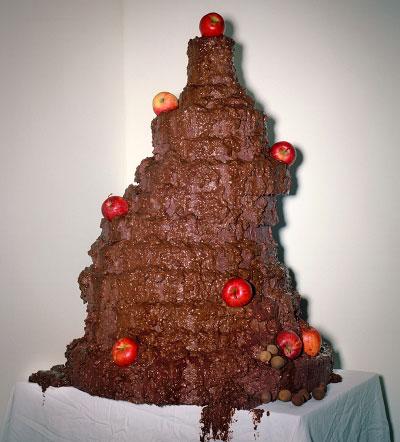
Photography by Matthieu Lavanchy and Jonas Marguet (Click images to enlarge)

Swiss photographers
Matthieu Lavanchy and
Jonas Marguet met while studying at the University of Art and Design Lausanne. In collaboration with others, Marguet founded the publishing house Aplustrois in 2008 as a side project. The publisher “considers the editorial object (book, booklet or other format) as an essential complement to any artistic event. The aim is not to document or comment on the event, but rather to push it further and explore new forms starting from it”.
When Aplustrois was approached by a theater troupe that was working on a play that dealt with themes of the public perception of obesity and the concept of BBW — “big beautiful women” — Marguet and Lavanchy created a book of still-lifes about Western society’s complex relationship toward food, and “the tension between seduction and repulsion”.
Grotesque towers of chocolate cake and a strangely melded pair of dining room chairs pull our associations with food and dining to their absurd extremes — and pseudo-scientific beakers and equipment seem to allude to our desire to measure out portions and study our food while simultaneously attempting to ignore the baseness of the instinct to eat. Curiously absent of human figures, Lavanchy and Marguet’s images manage to be funny, strange, and disturbing through their objects’ startling manipulation.
Neuf Veltes Remplissent un Quartaut is available for sale
here. It is also on sale at
Dashwood Books and
Capricious Space in New York.
(more…)
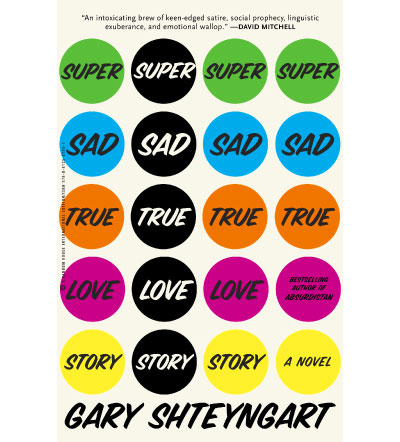
Cover courtesy of Random House Publishing

For as long as I’ve been aware that something called literature existed, people have been lamenting its demise. In
Super Sad True Love Story, Gary Shteyngart’s new novel published this week by Random House, literature has already died what was, apparently, a rather quiet and unnoticed death. And, while the decline of print is one of the many subtly interwoven themes of the novel, I’ve never felt more hopeful about the future of literature than I did when I finished this book; the medium is safe, as long as novels like
Super Sad True Love Story are being written.
Set somewhere in what is often ominously and lazily referred to as the not-too-distant-future — which, of course, means that its true subject is the present —
Super Sad True Love Story tracks the romance between Lenny Abramov and Eunice Park. The former is a middle-aged, balding depressive who is likely the last person on Earth who still owns, and for that matter reads, books. The latter is a 24-four-year-old recent graduate of Elderbird College (with a major in Images and a minor in Assertiveness), who is remarkably cute, often cruel, and ultimately sympathetic. Both are the children of immigrants, desperate to fulfill their parents expectations and desperate to overcome the insecurities that are the scars of their upbringing.
(more…)
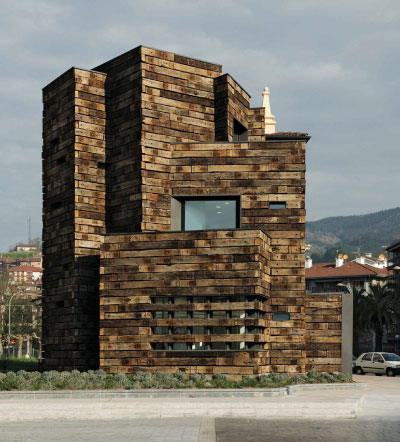
Azkoitia Municipal Library, Gipuzcoa, Spain, 2007. Estudio Beldarrain.
Facade built from railroad ties.
All images courtesy of W.W. Norton. (Click images to enlarge)

Short of building nothing new at all, the most environmentally-conscious strategy toward construction is to build with what materials are at hand. This reduces the extent of mining and foresting, the energy required for fabrication, and the emissions associated with shipping.
One powerful and increasingly popular approach is to build with waste materials. This can be implemented at different scales, by powdering demolished concrete blocks to use in a new mix, building a house on an old foundation, or reinvigorating an abandoned site like Governor’s Island. Alejandro Bahamon and Maria Camila Sanjines have compiled some of the more promising waste-capturing projects in an inspiring new book,
Rematerial: From Waste to Architecture.
The projects have a distinct aesthetic, one that values the patina of weathered and marred materials over refined geometries and gleaming surfaces. A small library in Spain, whose walls are constructed from stacked railroad ties, has a rough, mottled appearance. A house addition in The Hague, with a facade of tread-worn tires, has a post-apocalyptic, Mad Max look.
(more…)
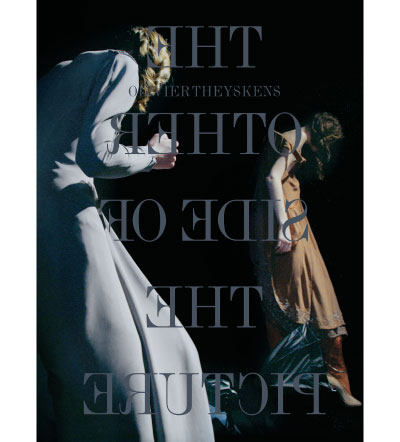
Photography by Julian Claessens (Click images to enlarge)

Released this spring by Assouline, Olivier Theyskens: The Other Side of the Picture features beautiful behind-the-scenes photographs by Julian Claessens, which capture Olivier Theyskens rapid, international ascension as a fashion designer. Theyskens dropped out of design school at the age of twenty to design his first collection in 1997, for which publications such as Women’s Wear Daily, The New York Times, and Harper’s Bazaar noted his singular talent. Later that year, Madonna even wore one of his dresses to the Oscars. In the thirteen years since, Theyskens has revamped the house of Rochas and moved on to become artistic director of Nina Ricci.
Claessens’ photographs explore the variety and careful skill in Theyskens’ designs, while simultaneously exposing the intimate moments, craftmanship, and authenticity behind the veneer of a fashion show. The book is a valuable read not only for its lush overview of Theyskens’s unusual, revolutionary career but also for the thoughtful layer it adds to our occasionally all-too-superficial perception of the fashion world.
Olivier Theyskens: The Other Side of the Picture is available for purchase at www.shopassouline.com.
(more…)

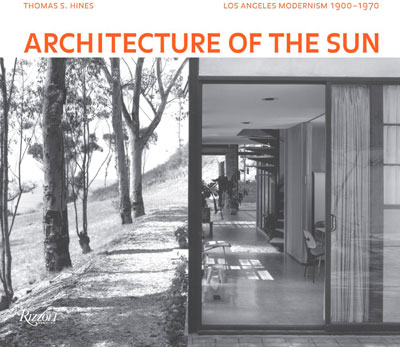
©Thomas S. Hines, Architecture of the Sun, Rizzoli, 2010. All images courtesy of Rizzoli. (Click images to enlarge)
 California modernism, which gave rise to stunning works by Rudolf Schindler, Richard Neutra, and Charles and Rae Eames, is often overshadowed by its better-celebrated East Coast and European counterparts. So Thomas S. Hines’ new compendium of modern buildings in Los Angeles, Architecture of the Sun, is a welcome corrective.
California modernism, which gave rise to stunning works by Rudolf Schindler, Richard Neutra, and Charles and Rae Eames, is often overshadowed by its better-celebrated East Coast and European counterparts. So Thomas S. Hines’ new compendium of modern buildings in Los Angeles, Architecture of the Sun, is a welcome corrective.
Hines is a well-known architectural historian who tracks design developments thoughtfully, but his real achievement here is the astounding collection of photographs and drawings he’s assembled. Unlike in other cities, in Los Angeles many influential modern structures were small houses and stores that were particularly vulnerable to the vagaries of the market, and also fires and earthquakes. The book brings some of those long-gone buildings back to life, and brings works by less celebrated architects such as Irving Gill and Raphael Soriano to the forefront.
In many ways Los Angeles was the perfect ground for modern building. Its open, undeveloped landscape, temperate weather, and dry climate lent itself to a spacious, inside-outside architecture that was less concerned with planning and weatherproofing than with sculptural expression.
(more…)

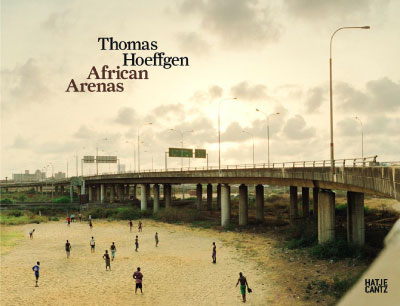
Photography by Thomas Hoeffgen. Courtesy of Hatje Cantz.
(Click on images to enlarge)

To host this year’s FIFA World Cup, the first ever held on its continent, South Africa spent almost 1.5 billion dollars to build five new stadiums and refurbish five others. In a country where many live without adequate housing, water, and medical care, the decision provoked criticism that the government cared more about its international image than problems in its own backyard. But after looking through photographer
Thomas Hoeffgen’s new book
African Arenas, which documents soccer fields in South Africa as well as Namibia, Nigeria, Botswana, Zambia, and Mali, one can’t help but feel that the expense is commensurate with the country’s deep love for the game.
There are all sorts of playing fields here, from the immense, ultramodern stadiums built for the World Cup, to shabby schoolyard pitches and sandy lots with goals fashioned from scrap wood. The boys and young men pictured play joyfully, without proper uniforms and often without shirts and shoes. Hoeffgen’s photographs, which are low and flat and have a slightly faded-out finish, capture a broad, dusty, sun-drenched landscape. And in their sparse, uncluttered compositions they suggest that soccer is the most elemental of sports. It can be played anywhere: on concrete, artificial turf, sand, or grass. All that’s needed is a bit of space, a ball, and a way to mark the goals.
(more…)

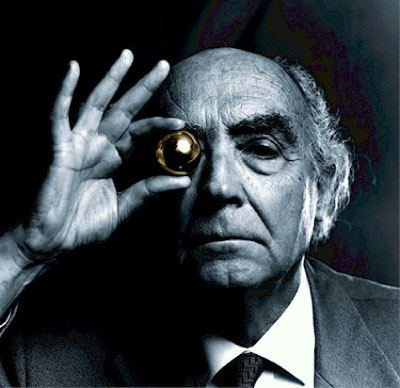

Portuguese novelist José Saramago died last Friday on the Spanish island of Lanzarote. He was 87. Saramago is known for his poignant parables on humanity and politics. Awarded the Nobel Prize for literature in 1998, his works have since been translated into more than twenty-five languages. A vocal leftist, Saramago worked for years at various odd jobs before losing his job as a newspaper reporter after the downfall of Portugal’s incipient Communist revolution in 1975. He decided then to become a novelist. His strange, beautiful writing is perhaps best memorialized by these haunting words from his perhaps most famous novel, Blindness: ‘Why did we become blind, I don’t know, perhaps one day we’ll find out, Do you want me to tell you what I think, Yes, do, I don’t think we did go blind, I think we are blind, Blind but seeing, Blind people who can see, but do not see.”
Saramago strived his whole life to help the rest of us to see.
![]()






 Facebook
Facebook Permalink
Permalink Digg
Digg Reddit
Reddit LinkedIn
LinkedIn StumbleUpon
StumbleUpon Tumblr
Tumblr















